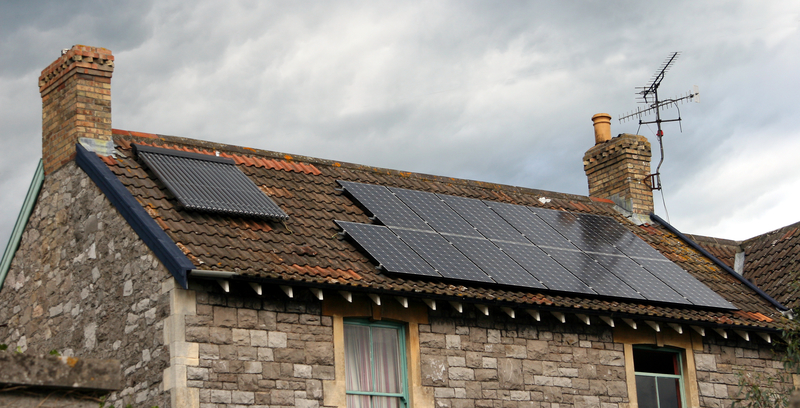Solar power has multiple advantages: contributing to a more “green” environment, lowering monthly costs, savings on property taxes, low maintenance, etc. You might currently be on the fence about solar power because of the myths purported by those utility companies. You don't know which sources are reliable and which ones are just distracting you. Below are several myths that you may have come across along with the facts and evidence to prove they are fictitious stories from the other guys.
MYTH #1: Solar panels require more energy to manufacture than they produce in their lifetime.
FACT: A study by the National Renewable Energy Laboratory conclusively demonstrates that the manufacturing energy cost versus the energy production payback for solar modules is generally less than 4 years.
“Assuming 30-year system life, PV-systems will provide a net gain of 26 to 29 years of pollution-free and greenhouse-gas-free electrical generation … So, for an investment of from 1 to 4 years worth of their energy output, PV systems can provide as much as 30 years or more of clean energy.”
MYTH #2: Solar manufacturing results in more pollution than is saved by solar usage.
FACT: A PV system meeting half of the electrical needs of a typical household would eliminate approximately half a ton of sulfur dioxide pollution from the air, and 600 lbs. of nitrogen oxides. In contrast, any pollutants produced in the manufacturing process are minimal and largely recycled.
MYTH #3: Solar is too expensive for widespread usage.
FACT: Going solar is one of the best investments any homeowner can ever make. A properly designed and installed solar electric system is equivalent to an investment with a guaranteed rate of return of 12 to 15% per year. This investment value increases as utility rate rise.
Solar photovoltaic (PV) technologies have declined in price every year since they were introduced.
The Federal government announced its One Million Rooftops Solar Initiative in 1997. There are also many local financial incentives available throughout California, including possible state rebates.
MYTH #4: I will store the excess energy I generate in batteries.
FACT: Your system generates power during the day and excess is fed back into the grid through a system called net metering. When this happens, your meter spins backwards and your utility company credits you for that power. At night or on overcast days, you’ll use grid power, but you don’t generally get charged for it because of all the credit you’ve generated.
MYTH #5: When the power goes out, my home is still powered by solar.
FACT: When the power goes out, grid-tied systems go out too. That’s because it’s not safe to be pushing electricity back out onto the wires while workers may be trying to fix the problem, so your inverter recognizes that the grid is out and shuts your system off.
MYTH #6: My solar panels won’t work in the cold winter weather.
FACT: Solar panels produce power based on the amount of sunlight the panels are exposed to, so they are unaffected by temperature. In fact, you might be surprised to know that solar PV panels actually work better in colder weather as opposed to extremely hot temperatures.
MYTH #7: Solar panels require maintenance.
FACT: Solar panels have no moving parts and do not require regular maintenance. Typically the recommendation is to hose off the panels once a year or so, but many panel owners actually never clean the panels and instead rely on the rain to do the job for them.
MYTH #8: The payback is far too long.
FACT: The Return on Investment is guaranteed at 5%-15% and your free energy collection will continue far into the next generation.
MYTH #9: A solar electric system will raise my property taxes.
FACT: There is legislation that prevents your property taxes from increasing from installing solar components. For every $1,000 that has been saved in annual electric costs, your home’s value rises $20,000. (U.S. Department of Housing and Urban Development).
MYTH #10: Solar panels will cause my roof to leak, deteriorate, or collapse.
FACT: Solar panels actually protect and preserve the portion of the roof they cover. If there’s ever a problem with the roof that needs to be repaired, panels can easily be removed. Most solar panels are not attached directly to the roof itself, but rather to a mounted railing system.
Have you come across any of these myths when switching to solar power? Are there other myths we should add to the list?
Article Source: Off Grid World

Myth #4
WRONG!…. You CAN store excess energy in battery backups, not every system is grid-tied.
Myth #5
CORRECTION… That is true for grid tied systems but that’s the point of having a battery backup system.
Myth #6
WRONG!…. Panels ARE affected by temperature. As you hypocritically said yourself, “solar PV panels actually work better in colder weather as opposed to extremely hot temperatures.”